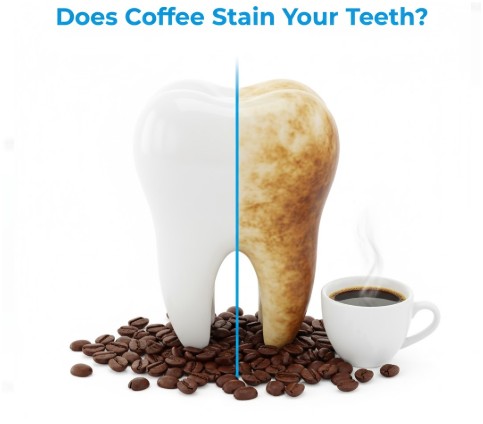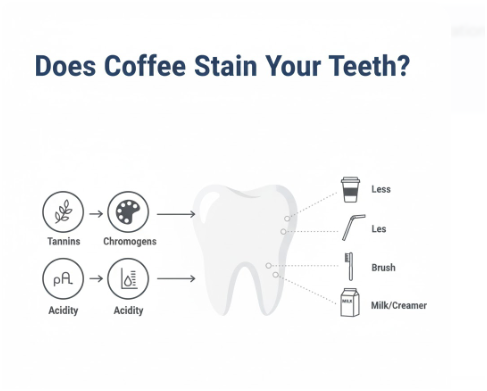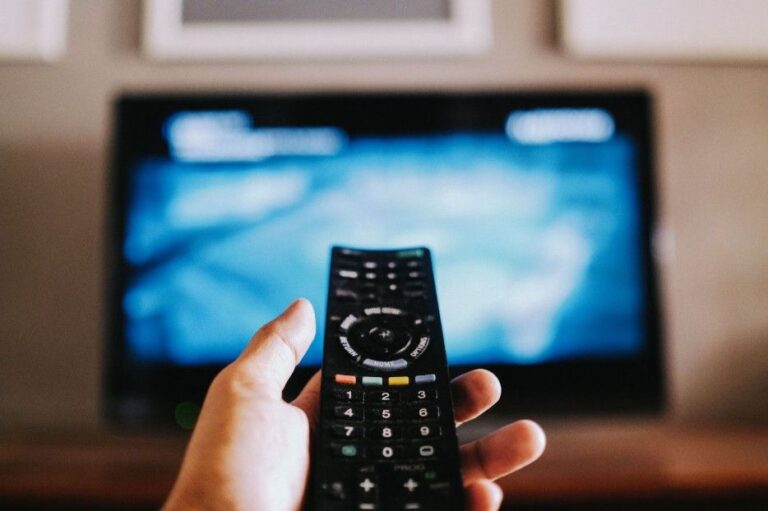I’ll admit it—I can’t start my day without a cup (or three) of coffee. But one morning, while brushing my teeth, I caught a glimpse of something that made me pause: my once-pearly whites looked a little… beige. That’s when I asked myself, “Does coffee stain your teeth?” Spoiler alert—it absolutely can. But here’s the good news: you don’t have to give up your caffeine fix to keep your smile bright.
Why Does Coffee Stain Your Teeth So Easily?

If coffee is part of your morning ritual, you’re not alone—but your enamel might not be thrilled about it. The reason coffee stains your teeth comes down to three main culprits: tannins, chromogens, and acidity.
Tannins are plant-based compounds found in coffee that cling to proteins on your enamel. Think of them like sticky magnets that make it easier for stains to latch onto your teeth. Then there are chromogens, those dark pigments that give coffee its rich, delicious color—but also turn your smile a shade duller over time.
And let’s not forget acidity. Coffee is mildly acidic, which means it can temporarily soften your enamel, making it more porous and easier for pigments to seep in. The more porous your enamel becomes, the more likely those stains are to stay put.
How Exactly Do Coffee Stains Form on Teeth?

You might think teeth are solid and smooth, but they’re actually porous—kind of like a sponge. When you sip your latte, those tannins and chromogens sneak into the tiny pores on your enamel and settle in like uninvited guests.
The stains build up gradually. At first, you might not even notice. But after weeks (or months) of daily sipping, your smile can shift from bright white to slightly yellow or even brownish. And if your coffee habit runs deep, the effect can become more noticeable—especially around the edges of your teeth or where plaque tends to collect.
Can You Prevent Coffee From Staining Your Teeth?

Absolutely. I love coffee way too much to give it up, so I’ve experimented with every trick in the book. Here are the ones that actually work for me (and they’re totally dentist-approved).
Rinse with water after drinking:
I always swish water around my mouth right after finishing my coffee. It’s a simple move, but it helps wash away pigments before they can stick around.
Brush—but not too soon:
Brushing immediately after your cup isn’t the best idea. Because coffee is acidic, brushing too soon can wear down softened enamel. I wait about 30 minutes before brushing—plenty of time for saliva to neutralize the acid.
Drink through a straw:
It might sound weird for hot drinks, but metal or silicone straws can help coffee bypass your front teeth. I use one for iced coffee religiously—it’s a small change that makes a big difference.
Add a splash of milk:
Fun fact: the casein protein in animal milk binds to tannins, reducing their ability to stain. I noticed my teeth stayed brighter when I switched from black coffee to a cappuccino.
What If Coffee Has Already Stained Your Teeth?
If your teeth already have that “latte shadow,” don’t panic. There are plenty of ways to reverse coffee stains—some you can do at home, others at your dentist’s office.
| Option | How It Helps | Best For |
| Whitening toothpaste | Gently lifts surface stains with mild abrasives | Everyday maintenance |
| Whitening strips | Uses peroxide to bleach deeper stains | Noticeable discoloration |
| Professional whitening | Dentist-supervised bleaching for stronger results | Long-term heavy coffee drinkers |
| Routine cleanings | Removes plaque and surface stains | Preventing buildup |
Personally, I use a whitening toothpaste daily and book professional cleanings every six months. That combo has been a game-changer.
How Can You Enjoy Coffee Without Wrecking Your Smile?
If you’re like me, giving up coffee is not an option. But you can enjoy it smarter. Here’s my personal “coffee lover’s survival guide” for keeping teeth white:
- Finish your coffee in one sitting.
Nursing a cup for hours keeps your teeth bathed in coffee all day. I drink mine while it’s hot, then rinse right after. - Use animal milk, not plant-based.
Oat, almond, and soy milk taste great but don’t contain casein—the protein that helps reduce staining. - Floss daily.
Coffee pigments love to cling to plaque between teeth. Flossing keeps those dark spots from sneaking in. - Whiten strategically.
I do whitening touch-ups every few months instead of blasting my teeth weekly. Over-whitening can cause sensitivity, so balance is key.
How to Prevent Coffee Stains on Teeth: My Simple Routine
Here’s my personal, no-fuss plan that keeps my teeth camera-ready—without skipping my morning brew:
- Drink coffee (and enjoy it!).
Life’s too short to give up your morning joy. - Chase it with water.
Rinse immediately to neutralize acid and flush out pigments. - Wait 30 minutes, then brush.
Use a soft-bristled toothbrush and fluoride toothpaste. - Stick with milk-based drinks.
Lattes, cappuccinos, or macchiatos are gentler on your enamel. - Book cleanings twice a year.
Professional polishing removes what brushing can’t.
It’s simple, effective, and totally coffee-lover friendly.
FAQs About Coffee and Tooth Stains
1. How long does it take for coffee to stain your teeth?
It depends on how much coffee you drink and your enamel type. If you drink daily, stains can appear within a few weeks. Lighter enamel shades or porous teeth tend to discolor faster, especially without consistent cleaning.
2. Does drinking coffee with a straw really help?
Yes! A straw minimizes how much coffee touches the front of your teeth. It’s most effective for iced coffee, but even with warm drinks, it reduces direct exposure to staining agents.
3. Can whitening toothpaste remove coffee stains completely?
It can help lighten mild stains over time, but it won’t match professional whitening results. Think of it as maintenance between dental cleanings rather than a total fix.
4. Is black coffee worse for staining than coffee with milk?
Definitely. The proteins in milk bind to tannins and reduce their stain-causing effect. Black coffee delivers the full pigment load directly to your enamel—so if you’re concerned about color, milk is your friend.
Bright Smiles and Bold Brews—My Final Takeaway
So, does coffee stain your teeth? Yes—but that doesn’t mean your love affair with coffee needs to end. With a few smart habits and a good hygiene routine, you can enjoy your daily brew and still flash a white, confident smile.
For me, it’s all about balance: I savor my coffee, rinse after, and smile wide without guilt. Because let’s be honest—life without coffee just wouldn’t taste the same.








